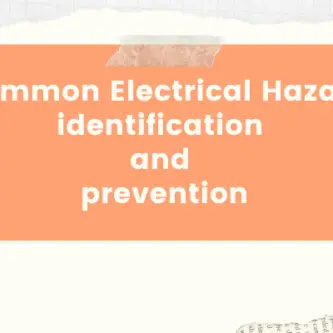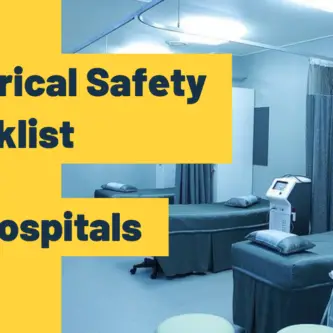Extension cords are an essential tool for powering appliances and devices in places where there are no electrical outlets nearby.
However, extension cords can be a fire and safety hazard if they are not used or maintained correctly.
In this article, we will explore how to identify signs of damage in extension cords and what to do if you find any issues.
The Importance of Checking Your Extension Cords Regularly
Extension cords are a common sight in homes, workplaces, and outdoor spaces, but they are often overlooked when it comes to regular maintenance.
Over time, extension cords can become damaged, frayed, or worn out, which can create a risk of electric shock or fire.
Extension cords can go bad over time. Frequent use, exposure to the elements, and physical damage can all cause an extension cord to wear out or become damaged.
That’s why it’s important to check extension cords regularly for signs of wear and tear and replace them if necessary to ensure safe use.
Inspecting the Cord for Wear and Tear
One of the most common signs of damage in an extension cord is physical wear and tear.
Check the entire length of the cord, including the plugs and sockets, for any visible signs of damage, such as cracks, cuts, or frayed edges. If you find any damage, stop using the cord immediately and replace it.
In addition to visual inspection, you can also feel the cord to check for signs of damage. A damaged cord may feel warm or hot to the touch, or you may feel small electrical shocks when you touch it.
These are signs that the cord is not working correctly and should be replaced.
Testing for Electrical Issues
Another way to check for damage is by examining the cord for signs of electrical issues. Plug the cord into an electrical outlet and turn on the device or appliance it’s connected to.
Check for overheating or sparking near the plugs or sockets, as well as any tripped breakers in the electrical panel.
If you notice any of these issues, stop using the cord immediately and replace it.
Overheating can occur when the cord is overloaded with too much current, or the cord’s wires are too small for the amount of power being used.
Sparking can occur when there is a loose connection or a short circuit in the cord. Both of these issues can cause fires or electrical shocks, so it’s essential to address them immediately.
Investigating Frayed Wires
Frayed wires are a common issue in extension cords, and they can be dangerous if left unaddressed.
Frayed wires can expose the internal wires, creating a risk of electrical shock or fire. If you find frayed wires in your extension cord, stop using it immediately.
You can repair a frayed wire using electrical tape, but it’s best to replace the cord altogether to ensure safety.
To repair a frayed wire, cut off the damaged section of the cord and strip the wire ends. Twist the exposed wires together and wrap them with electrical tape. Be sure to cover the entire area of the repair with the tape.
How to Test for Continuity and Other Electrical Issues
A multimeter is a useful tool for testing the continuity of wires and other electrical issues. To use a multimeter, set it to the continuity test mode and touch the probes to the two ends of the cord.
If the multimeter beeps, the wire is continuous, and the cord is in good working condition. If there’s no beep, the cord may have a broken wire or other electrical issues that need to be addressed.
Understanding Grounding
Grounding is the process of connecting a device or appliance to the earth, which protects against electrical shock and other electrical hazards.
Extension cords should be grounded to ensure safe use. To check if an extension cord is grounded, look for a third prong on the plug.
The third prong is the ground prong, which is connected to the earth via a grounding wire in the cord.
If the cord does not have a third prong, it is not grounded, and you should replace it with a grounded cord.
Read my other article the benefit grounding and bonding, to learn more about the importance of grounding.
Conclusion
In conclusion, extension cords are a convenient and necessary tool, but they can also be a safety hazard if they are not used or maintained correctly.
Regularly checking your extension cords for signs of damage, such as physical wear and tear, electrical issues, frayed wires, continuity, and grounding, is crucial to ensure they are in good working condition.
If you find any issues, stop using the cord immediately and either repair it or replace it. Remember, prevention is always better than cure, so it’s essential to prioritize the maintenance and replacement of your extension cords for the safety of yourself and others.


